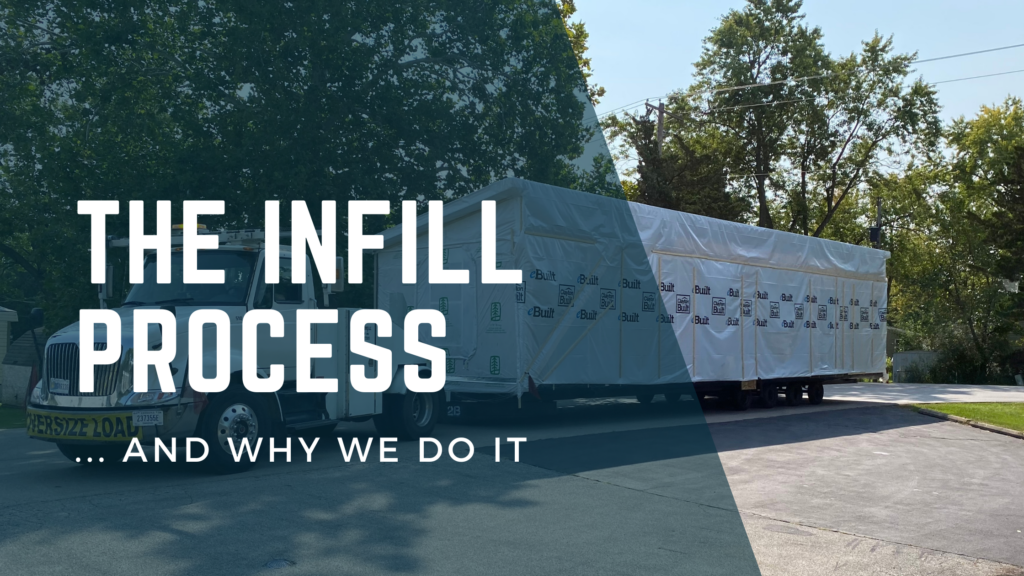In mobile home communities, the term “infill” refers to the process of bringing new homes into vacant lots within an existing park. Whether a community has a few empty spaces or a large number of unused lots, infill can play a significant role in maximizing occupancy, increasing revenue, and revitalizing the property. Here’s a closer look at what the infill process involves and why it’s essential for mobile home park owners and operators.
What Is Infill in Mobile Home Communities?
Infill in mobile home parks is the practice of filling vacant lots with new or used manufactured homes. Over time, parks may have empty spaces due to tenants selling their homes and moving away, homes being removed for disrepair, or the park having undeveloped lots. Instead of allowing these lots to sit vacant, the goal of infill is to add value by bringing in homes that can be sold or rented, thus increasing occupancy and cash flow.
Why Is Infill Important?
Empty lots in a mobile home park represent lost potential. Here’s why infill matters:
- Increased Cash Flow: Vacant lots don’t generate income, but every new home brought into the park provides either lot rent or home rent, both of which contribute directly to the community’s bottom line.
- Higher Property Value: Parks with higher occupancy levels tend to be more attractive to potential buyers and investors. Filling empty spaces not only improves the look of the park but also enhances its overall value.
- Community Improvement: Infill can significantly improve the aesthetics and reputation of a mobile home community. A park with fewer vacant lots feels more vibrant, well-maintained, and appealing to both residents and future tenants.
- Resident Retention: A thriving, fully occupied park creates a more engaging and enjoyable living environment. Existing residents are more likely to stay in a well-managed and lively community where new neighbors are moving in, and vacant lots aren’t left neglected.
The Infill Process: Step by Step
| Infill projects are complex and involve a lot of moving parts and parties. Here’s a high-level look at what goes into moving a single home into a community: 1. Initial Lot Evaluation: Our internal infill team (consisting of three dedicated Infill Project Managers as well as a Director of Infill), with the assistance of licensed contractors as needed, evaluates the lot’s infrastructure, such as water, sewer, electrical, and gas hookups. They also analyze the land to determine if it needs to be releveled or any other improvements are needed to pour concrete piers or pads. If upgrades are needed, various permits are pulled and contractors sourced to prepare the lot. 2. Home Sourcing: Once the lot is ready, the next step is sourcing a home, either used or new. For new homes, financing must be in place to order with the manufacturers, and dealer’s licensing, sales tax IDs, and other necessary items must be lined up to ensure compliance with state and local regulations. For used homes, our team has to schedule a visit to view the home, do a home inspection, and negotiate a purchase and sale agreement to purchase the home with cash. 3. Home Logistics: Coordinating the move of the home to the lot involves working with moving companies, ensuring they have the correct permits, and scheduling the transport. We also do a final inspection of the lot to ensure everything is ready to accept the incoming home, and coordinate the timing of the move with our on-site management team. 4. Home Setup: After the home arrives, it needs to be blocked, leveled, skirted and connected to utilities. We do a final home inspection to check for any potential damage during transport. Stairs and decks then have to be built, landscaping is installed, appliances are checked, the home is cleaned and prepped for sale or lease, and any final permits are secured. 5. Sales and Marketing: Once the home is ready, the sales and marketing teams work to list it for sale or lease. |
Challenges with Mobile Home Infill
While infill is overall beneficial, it can also come with challenges:
- Permitting and Zoning: Local regulations may require permits or impose zoning restrictions that can slow the process.
- Financing: Bringing in new homes requires an upfront investment, whether buying homes outright or financing through a third party.
- Utility Upgrades: Older parks may need significant upgrades to their utility infrastructure before new homes can be added, which can increase costs.
- Tenant Financing: For residents looking to purchase a home, securing financing can sometimes be difficult, especially if they have limited credit histories.
Why Open Door Capital Invests in Infill at Our Mobile Home Communities
At Open Door Capital, we see infill as an opportunity to create value for both our investors and the residents of our communities. By adding new homes to underutilized spaces, we’re able to provide affordable housing options, improve the overall community atmosphere, and increase returns for our investors.
Check out some images of the infill process on our What We Do page.

